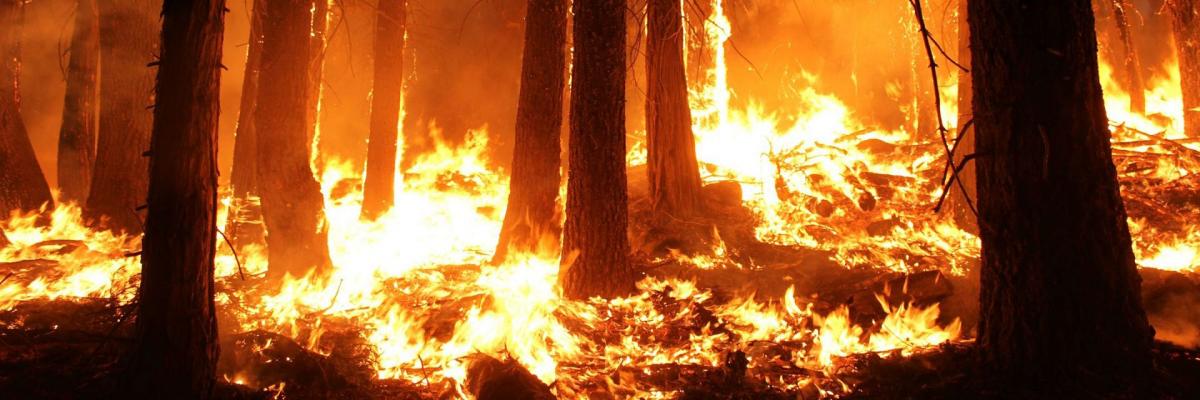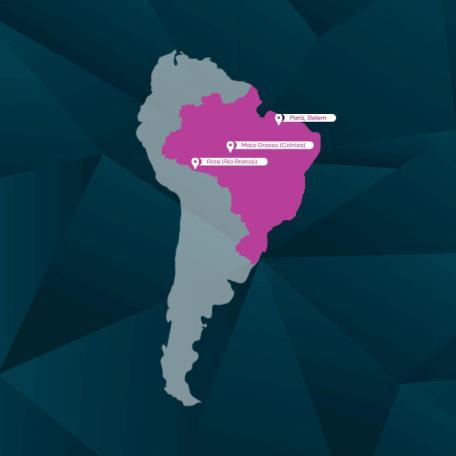Tackling the causes of the Amazon forest fires
Whilst the fires are still raging across the Amazon, Brazil has finally accepted some assistance from neighbouring Chile to help bring the fires under control.
Although President Jair Bolsonaro rejected a much larger aid package ($20M) from G7 countries due to political positioning.
But the causes behind the forest fires are unlikely to go away anytime soon. The pressure to develop the rainforest into farmland, and the slow drying of the forest due to climate change, that allows the fires to take hold, continues.
So how do we help the rainforest?
First let us be in no doubt that the Amazon forest fires are extensive, and are mainly occurring along the southern edge of the forest boundary where land is being cleared for farming. So far this year more than 80,000 fires have been recorded in Brazil, with more than half in the Amazon region.

Image by Skeeze, Pixabay
The fires are largely a consequence of the massive rate of land clearance in the Amazon region (hitting a recent 10 year annual high of nearly 8,000 km2), due to encouragement and new policies from the Brazilian government, that wants to see a more rapid rate of economic development in the region. Forest is typically cleared using machinery and then felled trees burned - classic slash and burn agriculture.
The situation is being exacerbated by climate change, which over the last 40 years has seen a warming, drying and stronger drought regime in the region and is starting to change the composition of the forest towards species that are more adapted to dryer conditions and which are more fire prone.
These fires are also highly significant because of where they are occurring.
The Amazon is a critical global ecosystem, supporting 1 in 10 of all species and sequestering about 2.2 billion tons of carbon dioxide a year (that soaks up about 10% of the anthropogenic emissions). This is why they are called the lunges of the earth and an essential biodiversity reservoir.
Time for action?
But if we are so concerned for the rainforest why don’t we do more globally to help protect it?
The ecosystem services of the Amazon in terms clean air, clean water, carbon sequestration, raincloud seeding, pollination services, current and future medicines, to name but a few, provide massive regional and global benefit. If we value these services, then we need to start paying for them. We need to be supporting countries that are home to the worlds remaining rainforests, and other essential ecosystems, to start conserving them for the global services they provide.
Building machines to convert CO2 into oxygen will be for more expensive than conserving areas of forest that do the job naturally, and that’s only one of the services on offer here.
Valuing the rainforest and the global services it provides
The recently produced first Global Assessment by the Intergovernmental Platform for Biodiversity and Ecosystem Services (of which I’m a lead author) is developing a framework to recognise the benefit and economic value of these ecosystem services.
Combined with philanthropic and intergovernmental support and action, there are positive signs of direct action to conserve the rainforest.
Non-governmental organisation The Nature Conservancy is now one of the largest private landowners in the world and protects 48 million hectares. TNC has an active program to support the purchase and protection of land with important conservation value in North America, Central America, and South America, Africa, the Pacific Rim, the Caribbean, and Asia.
High profile individuals are also starting to make bold support undertakings. Sting is well known for his longstanding support of Amazonia tribes, and other well-known film stars are using their celebrity to help address problems. Actor Leonardo DiCaprio recently pledged $5 million toward helping with the Amazon fires.
But some very large conservation donations are also coming from ultra-high net worth individuals, including Chinese female business leader and philanthropist, He Qiaonv, who has pledged $1.5 billion toward global wildlife conservation efforts.
A combination of support, prioritisation and political will could help value and protect our global forest assets.
Stopping illegal logging - a step towards preventing the land clearance cascade
Another key issue for the tropical forest is that clearance for farm land is usually the final act of a resource utilisation cascade; which starts with the selective logging of pristine forest (often illegally undertaken) for high value timber (decking and solid wood products), moves onto broader scale logging for lower value timber (plywood), and finally onto slash and burn clearance for farming.
Stopping or slowing the initial selective logging stage will help stop the cascade to land clearance. New legislation is now in place in many timber consuming countries (USA, Europe, Australia, Japan, Canada, New Zealand) that makes it illegal to import illegally sourced timber.
Some large, high-profile cases have already been prosecuted using this legislation (particularly in the US with Gibson Guitars and Lumbar Liquidators), and the global supply chain of timber, which is estimated at $180 billion but contains between 30-50% illegally sourced product, is slowly starting to clean up its act.
I’ve been working with the United Nations office of Drugs and Crime and also as Chief Scientific Officer for DoubleHelix Tracking Technologies over the last few years to implement scientific testing (DNA, stable isotopes and wood anatomy) to confirm the origin (species and region) of timber in global supply chains. This scientific checking can now be accessed through DoubleHelix’s globally leading timber verification and transparency system Nature’s Barcode.

Locations where Nature’s Barcode timber verification and transparency system being applied in Brazil by DoubleHelix
This work has recently been extended to Brazil, and so for the first time customers can purchase Natures Barcode verified timber coming out of Brazil, and be sure that the product they are buying is not contributing to the illegal logging and farm land clearance cascade.
About this article
Written by Professor Andy Lowe, this article was republished from Biodiversity Revolution: Thoughts from the vanguard of biodiversity research. View the original article.
